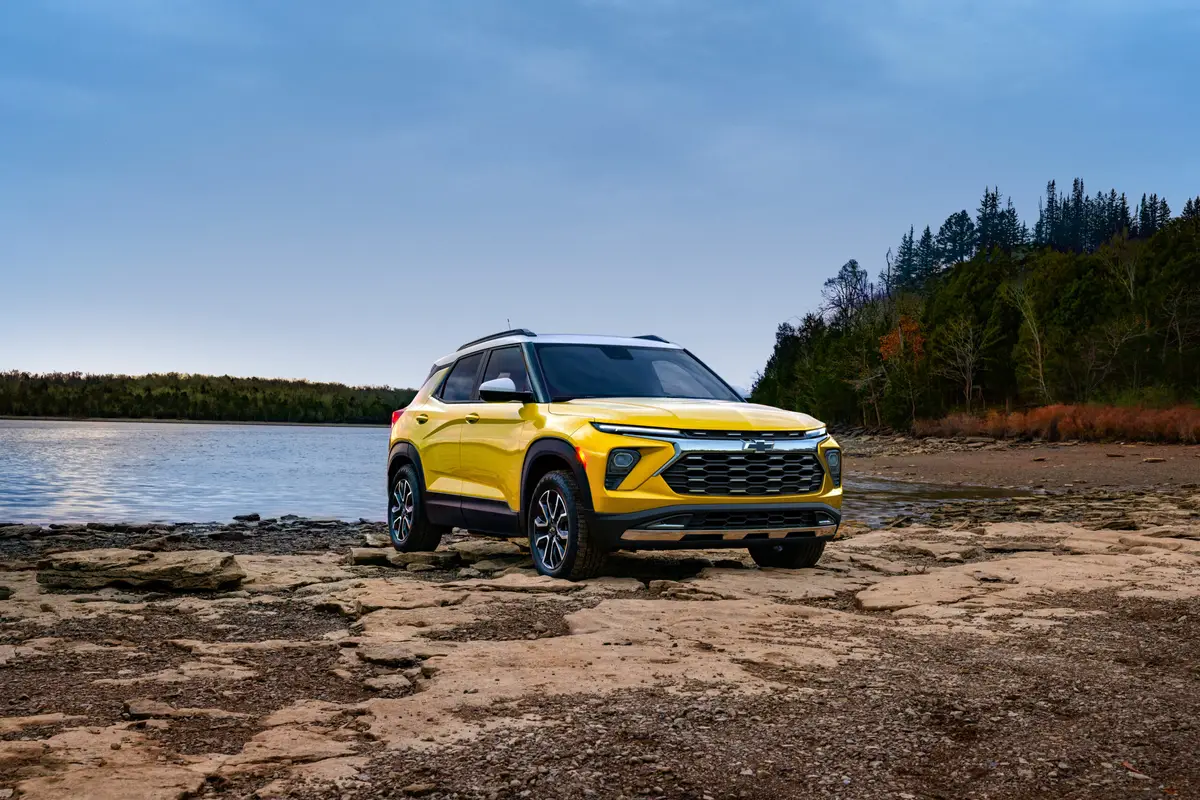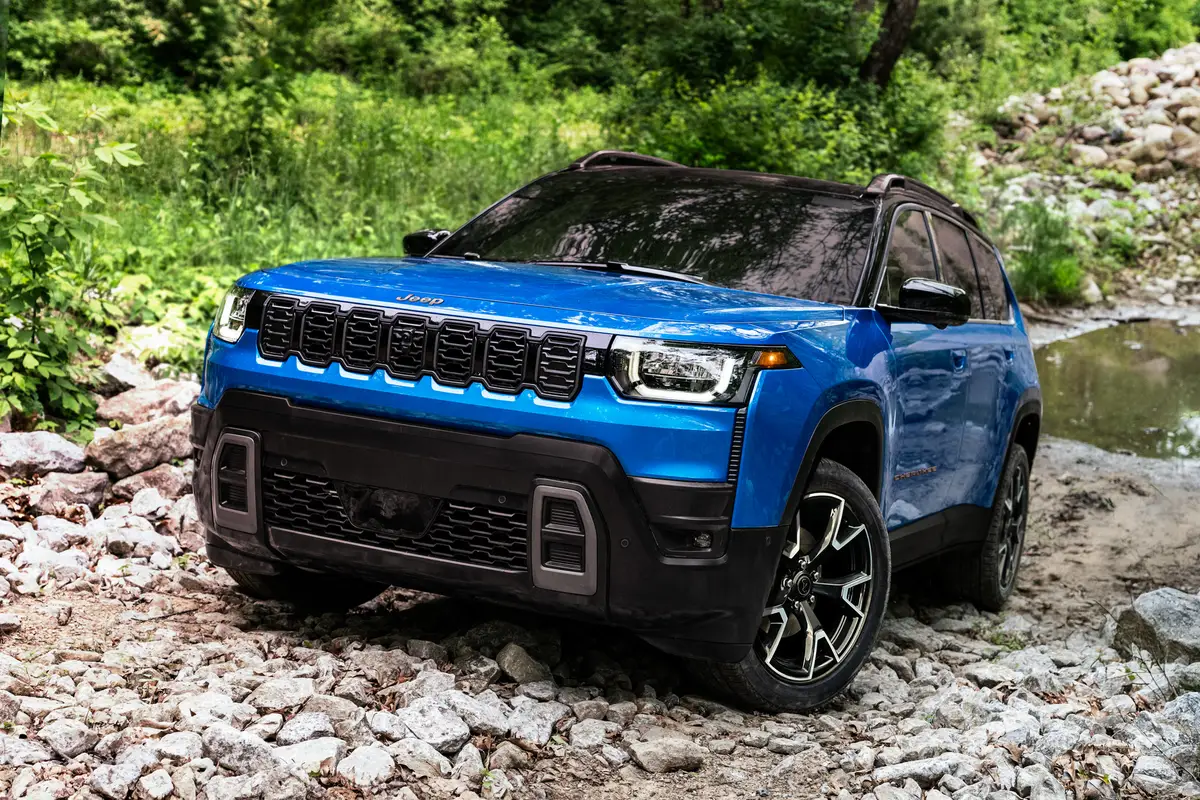TheMercuryNews.com's view
With the arrival of the 2004 Maxima sedan this spring, Nissan continues its hot streak of introducing innovative, eye-catching new products.
But I can’t help thinking it’s a little too weird.
What Nissan has done in the past few years, besides getting taken over by Renault — which turned around a company that was going broke — is to create a series of exciting cars and trucks. The list includes the Altima, the Xterra, the Murano, the 350Z and the Infiniti G35.
What all these cars shared was a somewhat out-there look. They certainly aren’t being confused with the sedans, coupes, SUVs and sports cars being sold by rivals Toyota and Honda.
But, to me, the edgy styling and the availability of splashy colors (yellow on the Xterra, a bronze-y orange on the Z and the Murano) felt like an attention-grabbing gimmick.
I realize now that I was wrong. The look (and the color palette) is, for better or worse, the new personality of Nissan.
Take the Maxima. Our test car was painted a shade that was similar to the one seen earlier on the Z and Murano. On the Maxima, Nissan calls it Radiant Ember. My kids call it “the orange car.”
And the styling, which I think I’m starting to like, is pretty radical. It’s all round, even arch-shaped, like a VW sedan, but much more muscular. The grille is bold and toothy with a unique pattern of shiny bits. The wheel wells are huge — to accommodate the 18-inch tires on our test car. The sides are smooth, and the rear is well-done and includes a subtle spoiler.
The oddest treatment, however, is what Nissan calls its Skyview roof. Seen from above, it looks like a Band-Aid across the top of the car. What it is is a kind of sunroof, except it doesn’t open up to let the wind in, which is totally bizarre. Instead, both front- and back-seat passengers have sliding panels that roll away to reveal the sunshine — or rain. (A regular sunroof is available.)
The contemporary look continues inside the cabin, which is done in black (with a variety of materials and textures) with a goodly amount of metallic trim.
The leather-covered seats on our 3.5 SE model were firm and comfortable. The Maxima’s new platform allowed engineers to create a bigger car with a longer wheelbase, more interior volume and a bigger trunk (now 15.5 cubic feet).
Our test car also came with the Elite Package, an option group that turned the normal three-person back seat into a highfalutin sitting area for two. A large center console complete with a deep storage bin, a 12-volt power point and two cup holders ran between the two back seats. The package also included automatic up-and-down windows and a power rear sunshade for the back window, the kind of thing you’d find on a Mercedes-Benz sedan.
In all, $6,400 worth of options were added to our test model, turning a $27,000 car into one that cost nearly $34,000.
The engine in the new Maxi ma will be instantly familiar to anyone who has driven a Nissan (or followed the Nissan comeback story) in recent years. It’s the 3.5-liter V-6 that’s found on numerous other models. Here, it produces 265 horsepower. That makes the Maxima a very fast car. I’d often look down while driving on the highway and be surprised that I was going 80 mph.
The only less-than-satisfying moment with the Maxima came from a troublesome transmission. Our car came equipped with the five-speed automatic with manual shifting. Both a four-speed automatic and a six-speed manual are also offered. Fine most of the time, the transmission felt a bit muddy at low speeds as it shifted into third gear. When I did the shifting myself, the moves from gear to gear were more satisfying. (It also didn’t help that the plate covering the automatic transmission was a bit loose, too, although that didn’t affect the shifting but it made the Maxima seem less than perfect, quality-wise.)
Two versions of the new Maxima are offered. The 3.5 SE is the sportier version with its metallic trim, 18-inch V-rated tires, tighter suspension and optional six-speed manual. The 3.5 SL is the luxury treatment with its standard wood trim, 17-inch tires and softer suspension.
When the Altima became Nissan’s mainstream sedan two years ago, the plan was to turn the Maxima into more of a performance/premium model. Now that the new version of Nissan’s front-wheel-drive flagship sedan has arrived — it’s built in the United States for the first time, at Nissan’s Tennessee plant — it’s easy to see the wisdom of that strategy. Nissan admits that it’ll sell fewer Maximas than in the past, but that’s OK with them, because now the Maxima and the Murano SUV serve as perfect bridges between mainstream Nissan and upscale Infiniti.
Latest news



